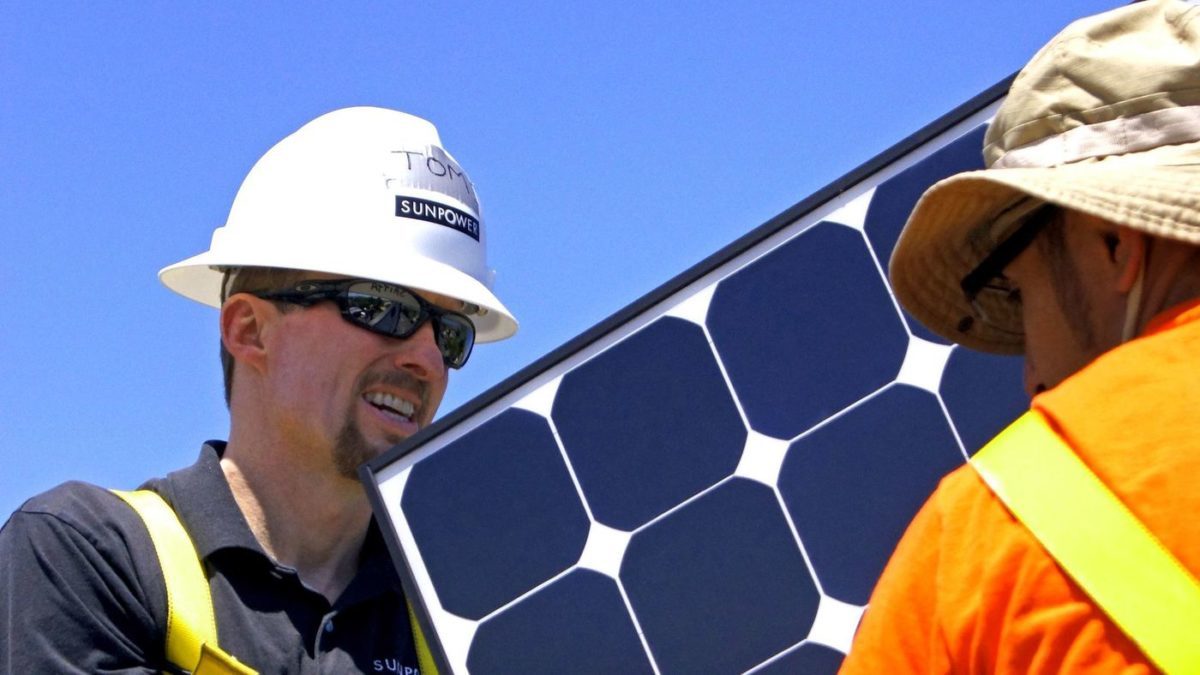Solar manufacturing is not an easy game – particularly for companies that are not supported by the Chinese government. SunPower has taken a beating from falling panel prices, Section 201 tariffs, and a variety of other challenges as it continues to churn out the highest-efficiency commercially available solar panels, and this has been reflected in its quarterly results and balance sheet.
Despite these challenges the company has pulled off a number of victories, sometimes against the odds, and has made strategic moves that could pave the way future successes. Most notably, in September SunPower was granted an exemption for its back contact technology from the 30% Section 201 duties, taking a significant weight off the company.
This victory comes as SunPower continues to ramp its new “NGT” back-contact technology to replace its Maxeon cells. The company has begun pilot production and expects to only produce tens of megawatts of the new product by the close of the year, but will more fully ramp at its Fab 3 in Malaysia in 2019.
During Q3 SunPower also closed on the acquisition of SolarWorld Americas and its Oregon factory, which it will use to make its shingled P-Series modules for the commercial segment.
Struggling towards the black
Looking beyond these victories, SunPower is still plagued by challenging financials. Q3 revenues fell 12% year-over-year to $428 million, and despite vowing a year ago to return to profitability in the second half of this year, SunPower reported an operating loss of $80 million and a net loss of $114 million.
Of course, SunPower’s plans to return to the black were before the imposition of Section 201 tariffs and a collapse in global module prices. Despite receiving an exemption SunPower will be reporting tariff costs through Q4. The company also took a hit through the “5-31” policy change in China, with 200 MW of P-Series shipments delayed, which further impacted revenues and margins.
Multiple years of losses are leaving gouges in the company’s balance sheet, which is showing only $51 million more in assets than liabilities, despite furious efforts to deleverage. These will continue in future quarters, and SunPower expects to be relieved of roughly $400 million in debt when the sale of its residential lease assets closes.
Future in DG
Despite these financial challenges SunPower has reason to be optimistic about the future. The company is increasingly pivoting to its more profitable distributed generation business, and has gained a substantial share of the residential market, particularly in California.
And here, policy is on SunPower’s side. An estimated 20% of the company’s residential sales during Q3 were for installation on new homes, and in advance of California’s mandate for all new homes to include solar SunPower has already forged partnerships with 16 of the top 20 homebuilders in California.
The company expects this mandate to double its sales to new homes, and here margins may be fatter due to the near-elimination of per-unit sales and other transaction costs.
Overall, SunPower notes that the global fall in module prices is not having much of an impact on its residential sales, due to the higher portion of balance of systems costs and relatively lower sensitivity to module price fluctuations in that market.
The company also scored a big win last week with a deal to install 23 MW of PV modules at Walmart stores in Illinois, and its commercial business appears to be growing at a healthy clip.
And while SunPower’s margin in its residential business was slim and commercial was negative during Q3, these could be poised to get much better. SunPower estimates that the cost to manufacture NGT is similar to mono-PERC, but with similar efficiencies to its Maxeon products.
The utility-scale market may be more of a challenge, and although SunPower expressed confidence in both the cost and technical advantages of its shingled P-Series product all module makers are struggling with the fall in prices, and for all PV makers the competition with Asian mono-PERC is only expected to intensify in coming years.
However, as evidence that it is too early to discount P-Series, this week SunPower scored a 349 MW module deal to supply the shingled cells to Australia’s biggest solar project, as its largest module supply deal to date.
2019 may be the big year for SunPower to turn its fortunes and its balance sheet around, if it can deliver on the promise of its new technology and market opportunities. The company has shown itself to be remarkably nimble so far, but is still in the red.
This content is protected by copyright and may not be reused. If you want to cooperate with us and would like to reuse some of our content, please contact: editors@pv-magazine.com.



By submitting this form you agree to pv magazine using your data for the purposes of publishing your comment.
Your personal data will only be disclosed or otherwise transmitted to third parties for the purposes of spam filtering or if this is necessary for technical maintenance of the website. Any other transfer to third parties will not take place unless this is justified on the basis of applicable data protection regulations or if pv magazine is legally obliged to do so.
You may revoke this consent at any time with effect for the future, in which case your personal data will be deleted immediately. Otherwise, your data will be deleted if pv magazine has processed your request or the purpose of data storage is fulfilled.
Further information on data privacy can be found in our Data Protection Policy.